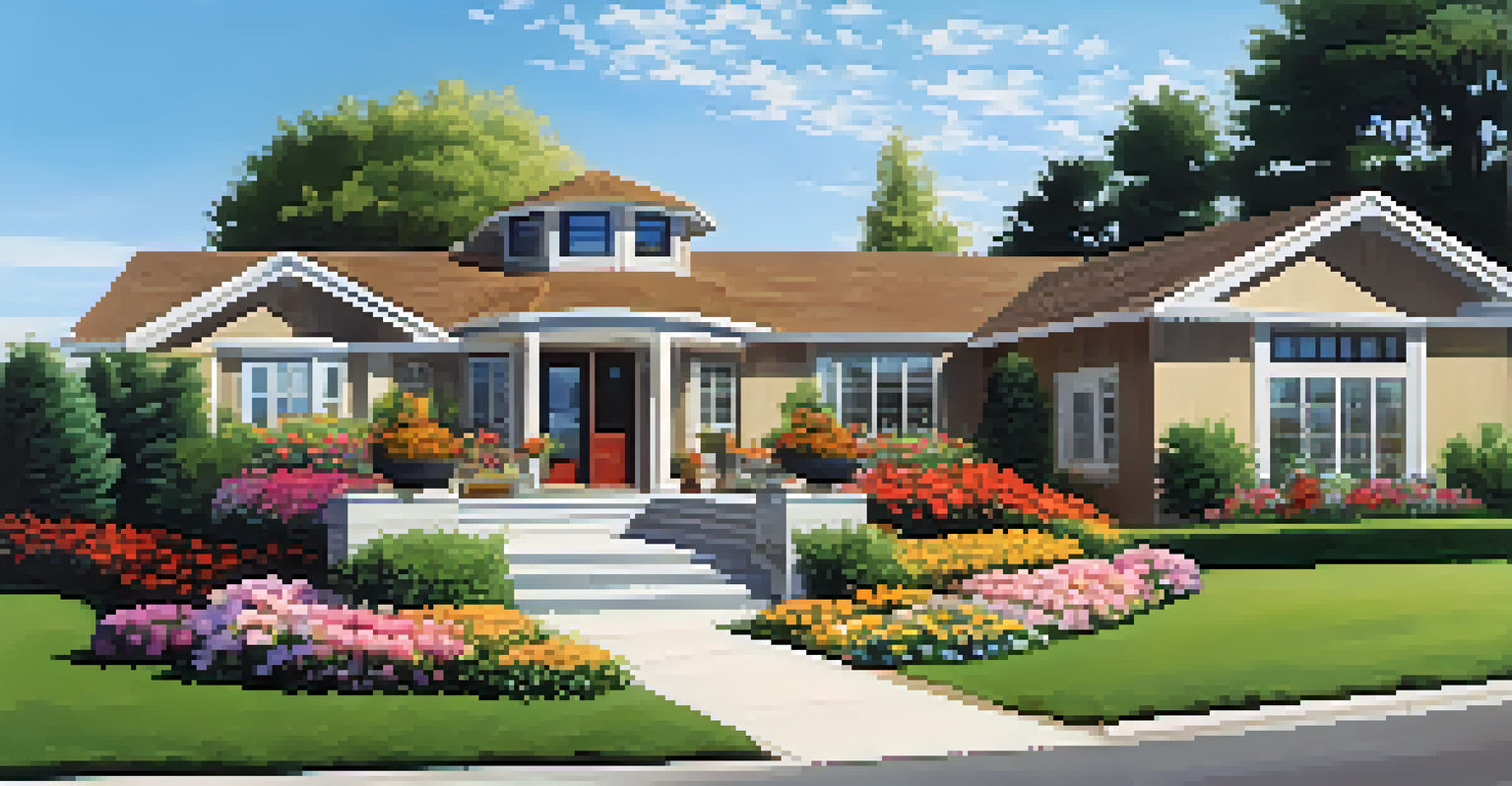Understanding the Costs of Home Accessibility Modifications

Why Home Accessibility Modifications Matter
Home accessibility modifications are essential for individuals with disabilities or mobility issues. They create safer and more comfortable living environments, allowing people to maintain their independence. These adaptations can range from simple changes like adding grab bars to more extensive alterations such as installing ramps or widening doorways.
Accessibility is not a privilege, it is a right.
Understanding the significance of these modifications goes beyond just comfort; it’s about dignity and quality of life. Accessible homes allow individuals to navigate their spaces without fear of injury or inconvenience. By addressing these needs, families can create a supportive atmosphere that fosters well-being.
Moreover, making a home accessible can sometimes be a legal requirement, especially for rental properties or public spaces. By prioritizing accessibility, homeowners not only comply with regulations but also demonstrate a commitment to inclusivity.
Initial Assessment: Identifying Needs and Costs
Before diving into modifications, it's crucial to conduct a thorough assessment of the home. This involves identifying specific needs based on the individual's mobility challenges. For instance, a person who uses a wheelchair may require wider doorways and ramps, while someone with limited vision might need better lighting and contrasting colors.

Once needs are identified, homeowners can start estimating costs. This initial assessment should include consultations with accessibility specialists who can provide insights on necessary modifications. By being proactive, families can avoid unexpected expenses down the line.
Importance of Accessibility Modifications
Home accessibility modifications enhance safety, dignity, and independence for individuals with disabilities.
Additionally, documenting the current layout and specific challenges can be beneficial when discussing options with contractors. This detailed approach ensures that the modifications made truly enhance accessibility and meet the individual’s needs.
Common Accessibility Modifications and Their Costs
There are several common modifications that homeowners might consider, each varying in cost. For example, installing grab bars in bathrooms can range from $100 to $500, depending on the complexity of the installation. In contrast, a full bathroom remodel to accommodate a walker or wheelchair can run anywhere from $5,000 to $15,000.
The greatest disability is the inability to see beyond our own limitations.
Widening doorways is another modification that can enhance accessibility. This typically costs between $1,000 and $2,500, depending on the structure of the home. Additionally, installing ramps can vary greatly in price, from a few hundred dollars for a simple wooden ramp to several thousand for a professionally built, permanent solution.
Understanding these costs helps homeowners budget effectively for the necessary changes. By prioritizing which modifications are most important, families can make informed decisions without feeling overwhelmed.
Financial Assistance and Grants for Modifications
Homeowners often wonder how they can finance these essential modifications. Thankfully, numerous programs exist to assist with costs, including government grants and local assistance programs. For example, the U.S. Department of Housing and Urban Development (HUD) offers grants for home modifications aimed at improving accessibility for low-income individuals.
In addition to government aid, many non-profit organizations provide funds or resources for home accessibility projects. These organizations often have specific criteria, so it’s important to research and see if you qualify. Community outreach programs can also offer assistance or connect you with local resources.
Financial Support for Modifications
Various government grants and non-profit resources are available to assist homeowners in financing accessibility upgrades.
Exploring these financial options not only alleviates the burden of costs but also empowers families to create a home environment that meets their accessibility needs without breaking the bank.
The Role of Insurance in Accessibility Modifications
Many homeowners are surprised to learn that their insurance policies may cover some accessibility modifications. However, coverage can vary significantly based on the policy and provider. It’s essential to review your policy or speak with your insurance agent to determine what modifications might be covered.
For instance, some plans may include coverage for necessary modifications resulting from an accident or health condition. This could encompass items like wheelchair ramps or bathroom renovations. Understanding what your insurance covers can significantly offset out-of-pocket expenses.
Additionally, keeping detailed records of all modifications and associated costs can help when filing claims. By being proactive and informed, homeowners can navigate the complexities of insurance and make the most of their benefits.
Choosing the Right Contractors for Modifications
Selecting the right contractor for accessibility modifications is crucial to ensure quality and compliance with safety standards. Start by seeking recommendations from friends, family, or local organizations specializing in accessibility. It’s essential to choose a contractor who understands the specific needs of individuals with disabilities.
When interviewing potential contractors, ask about their experience with similar projects and request references. A reputable contractor should be able to provide examples of their previous work, as well as testimonials from satisfied clients. This step will help you gauge their expertise and reliability.
Choosing Qualified Contractors
Selecting the right contractor is crucial for ensuring quality and compliance with safety standards in accessibility modifications.
Additionally, don’t hesitate to discuss your budget and needs openly with the contractor. A great professional will work with you to find solutions that fit your budget while meeting your accessibility requirements.
Planning for Future Needs and Upgrades
While addressing current accessibility needs is vital, it’s also wise to think ahead. As health conditions can change over time, planning for future modifications can save time and money later. For example, if the current modifications include step-free access, consider how that space could evolve as mobility needs change.
Incorporating flexible solutions, such as adjustable countertops or easily removable fixtures, can provide long-term benefits. This foresight helps ensure that the home remains functional and comfortable for years to come, regardless of changing needs.

Moreover, engaging family members in discussions about future needs can provide valuable insights. Together, you can brainstorm potential modifications that may be necessary down the line, ensuring everyone feels involved in creating a safe and accessible home.